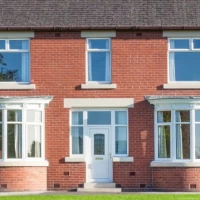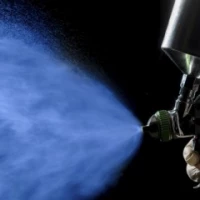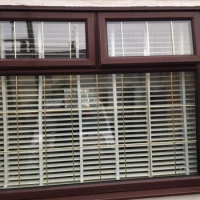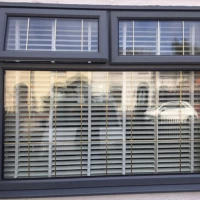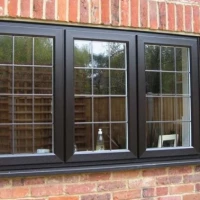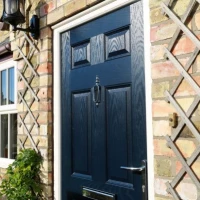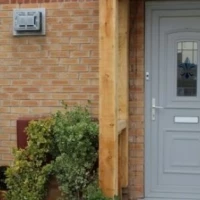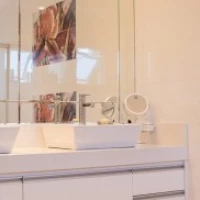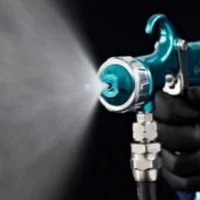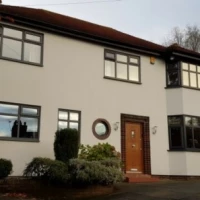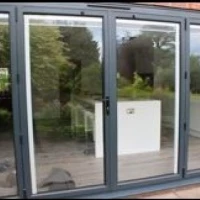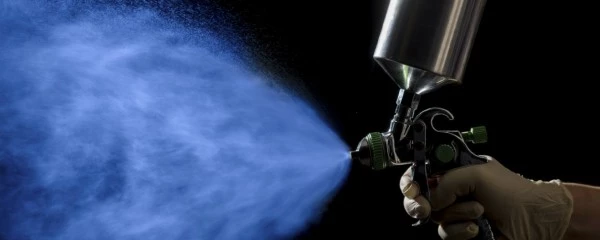
Intumescent Painting Contractors in Aston Cantlow
Get in touchProfessional Painting and Coating
Intumescent Painting Contractors Aston Cantlow B95 6. Our expert Intumescent Painting service is available for small or large areas, external or internal structures, and commercial or residential buildings, we can help to ensure that any property complies with fire safety standards.
If you're considering Intumescent Painting and Coating for your property, then you have come to the right place. We can create a perfectly tailored solution to your requirements and expectations.
For further information on what Intumescent Paint Coatings are and whether or not you need them, we have covered everything within this article.
The Importance of Fire Protection
Unfortunately, fires are a severe threat to the structural integrity and occupants of any building. Typically, a fire can reach temperatures that are more than 1000C. Without sufficient safeguards in place, they can rapidly spread out of control.
Complying With Fire Safety Regulations
Within the United Kingdom, it is a legal requirement that business, commercial and residential properties comply with standardised fire safety regulations. These building regulations require specific fire safety measures to be in place within and around existing and new structures.
Accordingly, it is highly recommended that all buildings comply with these regulations. It isn't tough to do so because upgrading existing fire safety measures to align with the government's requirements is simply a matter of upgrading existing fire safety measures. A thorough breakdown of the rules can be found here, Fire safety: Approved Document B - GOV.UK (www.gov.uk).
What Is Critical Temperature?
The critical temperature is the temperature at which a specific material will be compromised in the event of a fire. Steel, for example, is widely used within buildings, and it also happens to be one of the most reliable and robust materials used in construction. Depending on the structural purpose of the steel, its critical temperature can vary from anywhere between 350 to 750 degrees.
300 degrees - It is at this temperature that the steel becomes compromised.
400 degrees -The strength of steel dramatically decreases by 60 per cent.
550 - 650 degrees - This is the critical temperature of steel. At this point, any structural steel will lose its load-bearing capacity, distort and ultimately collapse.
Categories Of Fire Protection
When it comes to fire protection systems, there are two distinct categories:
Active Fire Protection: These systems describe manual and automatic fire detection and suppression methods. For example:
Alarms and evacuation systems
Portable fire equipment
In-built fire sprinklers
Fire safety training
Generally, almost every commercial and residential property is equipped with active fire protection in one way or another. The fundamental principle is that the building's occupants should have enough time to evacuate should a fire occur.
Passive Fire Protection: In contrast to active fire protection, passive fire protection refers to measures that are resistant to fires. Examples include:
Fire doors
Fire-resistant walls and doors
Fire-resistant dampers
Intumescent fireproofing
Intumescent fire protective coating systems
These systems are in place for when the fire is spreading. They are designed to prevent or stall the fire's progress and section the building so that the flames can be isolated. They, therefore, prevent collapse by ensuring that the structure is resistant to fires.
Intumescent Fire Proofing and Intumescent Painting
A fire is a devastating and potentially life-threatening event, and intumescent products are an invaluable protection mechanism.
Intumescent work by preventing the structural collapse of a building. Therefore, the capacity of the load-bearing parts of a structure mustn't be threatened by fireproofing steel beams and ensuring column fire protection.
Crucially, this makes sure that any occupants have more time to evacuate the building and give the fire department the chance to control and extinguish the fire before a collapse.
What Is Fireproof Paint?
In the industry, fireproof paint is referred to by many other names. The following are some examples:
Intumescent paint
Heat-resistant paint
Fire-resistant paint
Heat-resistant spray paint
Intumescent coating
Each of these terms describes the same product. For example, intumescent paint is essentially a protective chemical coating. It is carefully and thoroughly applied in layers, fireproofing a range of materials such as steel, metal, wood, timber, concrete, plaster, composite, and so many more.
The Benefits Of Intumescent Paint
There is a myriad of benefits associated with fireproofing a building with intumescent paint; these include but are not limited to:
Suitable for interior and exterior structures alike.
Straightforward and simple to apply and maintain every few years.
It can be applied off-site or on-site.
Durable and long-lasting.
It is compatible with the most commonly-used construction materials, including metal, steel, brick, concrete, softwood, hardwood, plaster as well as MDF.
It is one of the least intrusive and most aesthetically appealing fireproofing methods because an intumescent coating does not detract from the building's structure, aesthetic and architectural value.
Our intumescent painting service is available in Aston Cantlow B95 6
How Do Intumescent Coatings Work?
1. First and foremost, intumescent paint can be applied to the interior and exterior elements of any building.
2. It chemically reacts to temperatures exceeding 120 degrees by releasing a vapour.
3. In turn, the vapour carbonates and solidifies into a carbonaceous black char. Since this black char is a poor conductor of heat, it impedes the spread of the flames.
4. The black char also insulates and therefore protects the integrity of the surface. This ensures that the structure can still maintain its original load-bearing capacity.
5. Under the intense heat of a fire, this heat resistant paint coating will expand up to 50 times.
6. Depending on the building's structure and composition and the thickness of the intumescent coating, it can offer protection for up to 30, 60, 90 and even 120 minutes.
What Does Intumescent Coating Look Like?
When untreated, an intumescent coating will typically have a finish that resembles thick white paint. Whilst intumescent paints are available in either white or clear (for timber only), this doesn't mean that you are restricted to these two colours.
The intumescent coating can be covered with a 'top seal' of any colour so that you can maintain the building's aesthetic value. So, for example, if you are looking for 'black heat resistant paint', we would first apply the primer, then the intumescent paint coating, and then finally a black top seal.
Intumescent Coatings For Structural Steel
Applying an intumescent coating to structural steel is one of the most popular fireproofing methods for this material, primarily because it is efficient and straightforward and can be applied to any steel structure.
The Cost Of Intumescent Coatings
We advise all our clients in Aston Cantlow B95 6 that exact pricing and quotation for our intumescent painting and coating services will depend on your requirements and vary from project to project.
However, rest assured that we will advise you and keep you informed of any costs and expectations before we get started.
Before enlisting in any such services, we always advise that you consider these points for your project:
Intumescent paint thickness calculation will decide the level of fire protection required, either 30, 60, 90 or 120 mins.
The dimensions of each steel section (for example, 254x146x37)
Orientation – whether the structure is horizontal or vertical.
The quantity and length of each section or the overall meterage.
The number of sides that must be painted includes all sides, two sides, one flange, etc.
Application method – On-site or off-site, in a shop or a warehouse, etc.
Environmental factors – internal or external structures, weather, car parks, chemical exposure, etc.
What Is Fire Rated Paint?
A paint's fire rating refers to the length of protection that the paint provides during a fire. This, of course, depends on the structure and material itself and the thickness of the coating. This rating is measured in time intervals to provide 30, 60, 90 or 120 minutes of protection.
To ensure that your building is sufficiently protected, you must know the precise level of protection that you need according to the fire rating. Regarding intumescent coatings, the intumescent paint thickness calculation will be influenced by specific building regulations and purposes.
Heat Resistant Spray Paint
Usually, an intumescent coating will be applied with an airless spray gun, commonly referred to as heat-resistant spray paint or intumescent spray paint. An airless spray system provides an even coverage and smooth finish for the intumescent paint.
The thickness can also be adjusted according to the required level of protection.
There is an option to apply a coloured top seal such as black once the intumescent coating has dried, offering heat resistant black spray paint or any other colour that you may want.
Are There Different Types of Fire Intumescent Paint?
Indeed, there are various specialist formulations of intumescent paints for different materials. Moreover, some of these specific paints can be referred to by other names. Following is an outline of the types of intumescent paint and their name variations.
STEEL- intumescent paint for steel / fire paint for steel / fireproof paint for steel / fire retardant paint for steel
METAL- fireproof paint for metal / heat resistant paint for metal / intumescent metal paint
TIMBER or WOOD- intumescent paint for wood / fire retardant paint for wood / fireproof paint for wood / intumescent paint clear (available for timber)
CONCRETE - intumescent coating for concrete / intumescent paint for concrete
Intumescent Painting Contractors
Ultimately, an intumescent paint can be applied to materials pre-build or on-site. It is vital that the application of the intumescent coating complies with the requirements and follows fire regulations. Moreover, it has to be applied in specific and controlled environmental conditions.
When you enlist in the services of our intumescent painting contractors Aston Cantlow B95 6 we are on hand to explain the process to you, helping you understand the level of protection you need and the finish and colour you require. With this information, we can deliver a bespoke solution.
Ensuring the safety of your building's structure and its inhabitants doesn't have to be complicated. Please don't hesitate to contact us; we are always happy to share information and arrange a free quotation for you.
We cover Aston Cantlow (Warwickshire)
Get a quick quote
Skip to
Gallery

